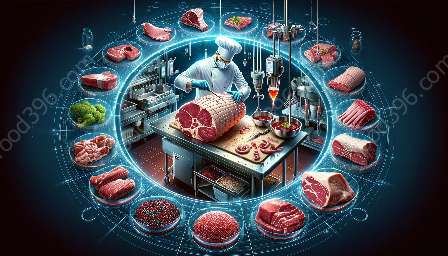Meat is a staple in many diets around the world, providing essential nutrients and proteins. However, it can also be a source of microbiological hazards that pose a threat to food safety and public health. In this comprehensive guide, we will delve into the complexities of microbiological hazards in meat, explore the measures for ensuring safety and hygiene, and understand the scientific principles underlying meat quality and safety.
The Importance of Meat Safety and Hygiene
Ensuring the safety and hygiene of meat is crucial to preventing the spread of foodborne illnesses and maintaining consumer confidence. Microbiological hazards in meat, such as bacteria, viruses, and parasites, can contaminate the product at various stages of production, processing, storage, and distribution.
One of the primary concerns is the presence of pathogenic bacteria, including Salmonella, Escherichia coli (E. coli), Listeria monocytogenes, and Campylobacter. These microorganisms have the potential to cause severe illnesses, with symptoms ranging from gastrointestinal distress to life-threatening complications.
To mitigate these risks, meat producers and processors adhere to stringent hygiene practices and safety protocols throughout the supply chain. This involves maintaining clean facilities, proper handling of raw materials, and implementing measures to control microbial contamination.
Understanding Microbiological Hazards in Meat
Microbiological hazards in meat can originate from a variety of sources, including the slaughter of animals, meat processing, cross-contamination, and improper storage conditions. Bacteria, in particular, thrive in environments rich in nutrients, such as meat, and can proliferate rapidly under favorable conditions.
Pathogenic bacteria can enter the meat supply chain through animal feces, contaminated water, or unclean equipment, leading to the contamination of meat products. Additionally, mishandling of meat during processing or inadequate cooking temperatures can contribute to the survival and spread of harmful microorganisms.
Risks Associated with Microbiological Hazards
The risks associated with microbiological hazards in meat are multifaceted and can manifest in various ways. Consumption of contaminated meat can result in foodborne illnesses, with symptoms such as nausea, vomiting, diarrhea, abdominal pain, and fever. In severe cases, individuals with weakened immune systems, the elderly, and young children are at a greater risk of developing complications from foodborne pathogens.
Moreover, microbiological hazards in meat pose economic implications for the industry, including product recalls, loss of consumer trust, and potential legal ramifications. Therefore, proactive measures must be taken to identify and mitigate these hazards to safeguard public health and maintain the integrity of the meat supply chain.
Meat Science: Ensuring Quality and Safety
Behind the scenes, meat science plays a pivotal role in ensuring the quality and safety of meat products. Researchers and industry experts delve into the microbiological aspects of meat production, studying factors that influence microbial growth, survival, and control.
From the microbial ecology of meat to the development of innovative preservation technologies, meat science encompasses a broad spectrum of disciplines aimed at enhancing the safety and shelf life of meat products. This includes the utilization of food additives, packaging technologies, and novel processing methods to minimize the risk of microbiological hazards and extend the shelf life of meat products.
Preventive Measures and Interventions
Various preventive measures and interventions are employed to mitigate microbiological hazards in meat. These include the implementation of hazard analysis and critical control points (HACCP) systems, routine sanitation practices, and temperature control to inhibit microbial growth. Additionally, ongoing research and development initiatives seek to identify natural antimicrobial agents, alternative processing techniques, and antimicrobial packaging materials to enhance the safety and quality of meat products.
The collaboration between meat scientists, food technologists, and regulatory bodies underscores the collective effort to address microbiological hazards and elevate the standards of meat safety and hygiene.
Conclusion
Microbiological hazards in meat present complex challenges that necessitate a multidisciplinary approach encompassing safety, hygiene, and scientific innovation. By understanding the risks associated with microbiological hazards and the interconnectedness of meat safety and hygiene practices, stakeholders across the meat supply chain can work collaboratively to mitigate these hazards and uphold the integrity of meat products. Through ongoing advancements in meat science and adherence to stringent safety protocols, the industry continues to strive towards delivering safe, high-quality meat products to consumers around the globe.

